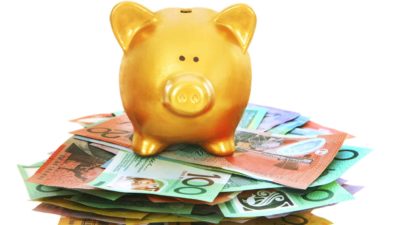Yesterday, I wrote about some big macro stuff – a combination of investing, economics and politics.
But today I'm going to aim straight down the investing fairway.
The inspiration? Shares in Warren Buffett's company, Berkshire Hathaway, are very, very close to hitting US$600,000 each (that's around $925,000 at the prevailing exchange rate).
Which is… a lot.
(At this point, let me disclose that I own some shares in Berkshire Hathaway, but not the US$600,000 ones, unfortunately! There is a second class of Berkshire shares that are currently just under US$400 each. They're the ones I own!)
Now, there are a few jumping off points from that extraordinary share price, and I'll take each in turn.
The first one is, I hope, relatively obvious. You only get a US$600,000 share price by getting good results for a very, very long time.
Here's the share price chart, via Google:

The thing is, that data only goes back to 1984.
Warren Buffett has been running Berkshire since 1965.
So the amazing 44,700% gain (447 times your money) actually dramatically underestimates the return.
Going back to the most recent Berkshire report – and it's almost a year old, during which time Berkshire shares are up another ~25% – the gain over the last 58 years is an incredible…
3,787,464%
Yes, compounding really works. And to get that return, what did you have to do?
Nothing.
Not 'not much'. You had to do precisely nothing. Just leave your money alone.
But that takes me to my second point.
Yes, time matters.
But if you've been a patient AMP Ltd (ASX: AMP) shareholder since early 1999, your 25-odd year share price return has been…
-92.93%.
To be fair, there have been some (sporadic) dividends over that time. Adding those in dividends reduces the loss to…
-82.35%.
Whichever way you cut it, the results aren't pretty.
So, time isn't enough.
Quality matters. A lot.
One Buffett is worth a helluva lot of other managers. So was one Steve Jobs.
But it's not necessarily about the people. One Coca-Cola, one Woolworths Group Ltd (ASX: WOW) or one CSL Limited (ASX: CSL) would have done wonders for your long term returns, too.
However you find it, investing in quality gives your returns a very strong advantage.
My third observation is about a company's share price.
Is $600,000 expensive for a Berkshire Hathaway share?
This is where I need to break down the word 'expensive'.
In normal life, 'expensive' is measured relative to our ability to pay. A Lamborghini is expensive. An Hermes bag is expensive.
Or it's measured relative to another product. A bottle of Penfolds Grange (I own shares in the winemaker) is 'expensive' in dollars, but also relative to the $9.95 bottle of shiraz you can grab on special from Dan Murphy's.
But shares are different.
Let me use the investor's favourite analogy: pizza.
How much is a slice of pizza worth? I hope, before you answer, you'd ask "How big is the slice".
$5 a slice would be cheap if a large pizza was only cut into two. If it was cut into 100 pieces, $5 would be too much to pay.
'Of course', you say. 'That's obvious'.
But when it comes to shares, the same logic should apply, but it's harder to grasp for many people.
How much should you pay for a share of Woolies? The right answer is a question: "It depends on the value of the whole business (the pizza) and how many shares there are (how many slices)".
Woolies current total value (the value of all the shares, added together) is $44 billion.
If there were two shares, they'd be valued at $22b each.
If there were 8 billion shares, each would go for $5.50.
They wouldn't be any 'cheaper' at $5.50 than at $22b, in terms of the value you'd get for your money (though admittedly, not many of us have $22b to throw around!)
But let's make it simpler:
If Woolies had 2 billion shares on issue, they'd be worth $22 each.
If it had 4 billion, they'd sell for $11 each.
Some people will tell you that $11 per share is 'cheaper' than $22 per share, and therefore a better buy.
I hope you now see that they'd be very, very wrong.
My last Berkshire-related observation is about 'runway' – how much room a company has left to grow.
When I recommended (and bought) Coca-Cola Amatil shares a few years back, I liked the company's track record, its brands, its distribution, and its ability to stave off competitors.
(Coca-Cola Amatil was the local Coca-Cola bottler in Australia and much of the Pacific, and had a few other businesses, besides. It was eventually acquired by another bottling company.)
To put it simply, I think I was right.
And yet, it was a poor investment.
Why? Because it didn't have enough 'runway' left. It already had products and fridges in every single servo, corner store, supermarket and stadium in the country. And it had vending machines pretty much everywhere else!
Which is fine, but then you have to pay a price that allows for limited growth. I… didn't.
Berkshire gained so much, over such a long time, because it was a business that could continue growing for decades. I still think it'll keep growing, for the record, but the opportunities narrow when you become much, much larger, over time.
You don't have to be on the cutting edge to find business that can grow for a long time – Woolies had been around for decades before listing back on the ASX in 1993 at $2.45. The shares now trade for almost 15-times that price, and that's before adding back the dividends that have been paid over that 31 years.
I'm not sure we'll see another Berkshire in our lifetime. But the lessons that can be drawn from its – and Warren Buffett's – success can be learned and applied to our investing, today.
(Oh, and if the company's shares grow at just 8% per year between now and Buffett's 100th birthday, they'll top the previously unimaginable US$1 million mark. No promises and no guarantees, but that would be extraordinary.)
Fool on!









